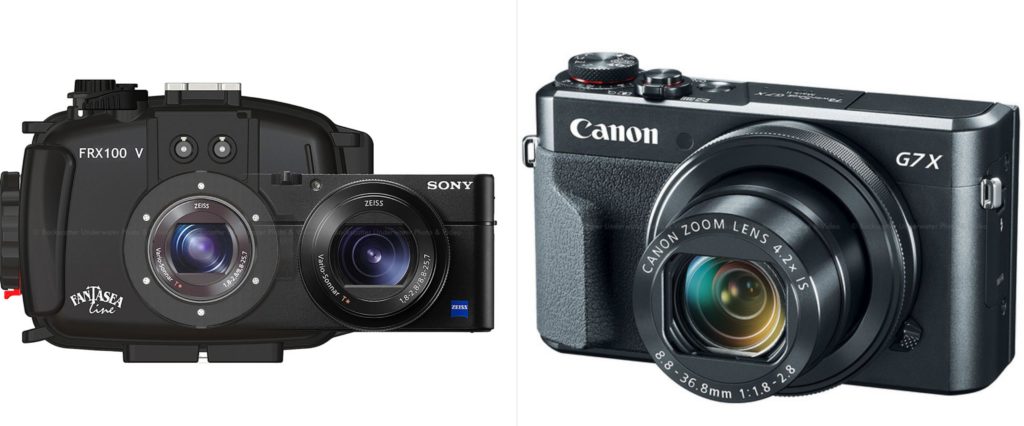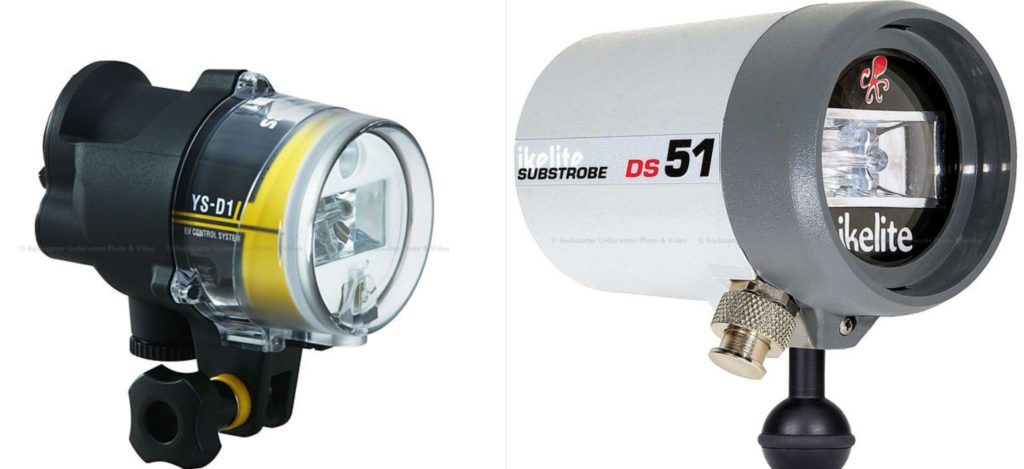Photography Corner With Alexandra Harper-Graham
Alex is part owner of Coconut Tree Divers Roatan, Honduras and an underwater photography connoisseur with her own business ‘Alexandra HG Photography‘. A photography degree from Plymouth University combined with her love for scuba diving has lead Alex to her greatest passion: Underwater Photography. With over 12 years of experience underwater Alex is here to help guide you through all of your underwater photography needs, equipment choices and tips!

Alex with her underwater set-up!
Today’s topic:
What is the best equipment to buy for underwater photography?
I am often asked my recommendation on the best equipment for taking decent underwater photos (Note: still photos, as video is not my domain).
Before responding I always ask two questions back:
- What do you want to get out of your photos?
- What is your budget?
As these two answers often make a huge difference in my recommendation for the right equipment and set-up. Like many things in life, there is never one correct all encompassing answer!
Compact Camera vs DSLR
Compact Camera
A compact camera, often referred to as a point-and-shoot camera, is a small and easy to manage camera designed to make photography easy for everyone. They are popular cameras for travel and everyday life because they are usually lightweight, easy to use, and budget friendly.
A point and shoot camera is just that… you point, you press a button and the camera automatically handles the settings for that shot.
DSLR
AKA a Digital Single-Lens Reflex. These are very popular cameras and pretty much synonymous with professional cameras. A Single-Lens Reflex camera means just that. The DSLR that you photograph with has one lens, where the light will travel through to hit the digital sensor. These cameras are more complex in nature and allow you to completely customize each shot instead of just pointing and shooting in automatic.

Alex Harper-Graham Photography. Pederson cleaner shrimp with eggs.
Cameras
Recommended camera brands: Nikon, Canon, Sony, Olympus, Lumix, and Panasonic are all great brands of cameras that have plenty of models to choose from.
Compact camera recommendations:
A photographer friend who has been visiting Roatan for years takes amazing photos with the Sony Rx100V compact camera with Fantasea housing. This set-up for just the camera and housing is approximately $1,400. She also uses dual strobes and a wide angle wet lens to really bring out the colors in the shots.
My absolute favourite is the Canon G series. Over the years I have used many starting with the G11 and worked my way up to the current Canon G7x Mark ii. You can shoot with underwater preset modes with a red filter if you want a simple point and shoot capability but also shoot in manual so it can work for many different photography skill levels. It also shoots in RAW which is important for post editing but I’ll save this for another blog. To give you an idea on price you can currently buy a Canon set-up with Fantasea FG7XII housing for around $1000. Another option you can go for is the Canon own brand housing which can bring the cost down a bit if you’re already thinking this is out of your budget.

Left: Sony RX100V RIght: Canon G7x Mark ii
DSLR recommendations:
An example of a high end DSLR take look at the Canon EOS 6D Mark II DSLR camera. You could then buy a Nauticam for $3,390 or Ikelite housing $1,695 for this camera. The cost starts from $3000 without all the bells and whistles.
This example of a DSLR set-up has been recommended from professional photographer Francesca Diaco. She uses Nikon D810 in SEA&SEA housing; Sigma 15mm fisheye, Nikon 105mm macro and dual SEA&SEA YS-D2 strobes. It costs around $10,000. Her photos are stunning, check out her bio here.

Left: Canon EOS 6D Mark II DSLR Right: Nikon D810
Housing
What makes a camera available for underwater photography is not the camera itself, but the housing you choose to encase it in! Choosing a housing is important, it obviously protects the camera from the water but also you can still use all the same functions underwater as you can on land. They are all depth rated and can vary quite a bit so make sure to choose wisely if you enjoy deeper dives or technical dives.
Some recommended housings:
Aquatica & Nauticam – The more expensive option, yet the most durable and excellent for deep or tec dives. Many have an immense depth rating of 100-150 meters/500ft. A downside here is these set-ups tend to be slightly heavier than most due to their extreme durability.
Ikelite – This is the most popular housing choice for DSLR and mirrorless cameras but recently they are branching into making models to fit cheaper point and shoot cameras. Ikelite is a reputable solid manufacturer at mid-range cost, you can find their housing options here.
Fantasea – This housing is designed for compact camera’s like the Canon G series. A solid product found also at mid-range cost.
Olympus – This is one of the cheapest models you’ll find available for underwater photography. Olympus have recently brought out the new TG-6 with many new features. If you like macro you’ll love this camera. The cost is around $750 for the housing and camera on Amazon.

Alex Harper-Graham Photography shot using the Fantasea housing. Silversides in Hole in the Wall
Strobes
A strobe is an external underwater flash. This really can help improve in underwater photography as strobes allow you to try different lighting output, angles and help to reduce backscatter when used correctly.
The most popular brands of strobes include Inon (more expensive), Sea&Sea (mid range) and Ikelite (larger and bulkier but powerful)
Strobe recommendations for DSLR:
A few of the most popular and highly recommended are the Sea & Sea YS-D1, Sea & Sea YS-D2, the Ikelite DS-160, and the Inon Z330. All at different price points!
Strobe recommendations for compact camera:
A few of the most popular and highly recommended are the Sea & Sea YS-01, Sea & Sea YS-03, Inon S2000, and Ikelite DS-51s.

Left: Sea & Sea YS-D1 Right: Ikelite Substrobe DS-51
What is right for me?
I mentioned in the beginning the two questions I ask to those interested in underwater photography.
What do you want to get out of your photos and what is your budget?
Remember buying the best is not a shortcut to taking great photos! I have seen many a photographer will all the gear and no idea! If you are a beginner, sometimes starting with the basics and working your way up is the safest way to go.
Here are the pros and cons of each type of choice you could make:
Choosing a DLSR
Pros: Amazing high quality photos and sharpness. Recommended for those interested in really perfecting their underwater photography skill set. DSLR’s can give you a wide range of freedom in the type of composition and photos you desire.
Cons: This is the most expensive avenue as prices can get from $3000-$6000. This set-up is not for everyone and the housing will be more expensive than that of a compact camera. Before starting your dive, you will have to commit to shooting in wide angle or macro since you cannot change this underwater. So it is best to discuss with your dive shop and dive master the type of dives you’ll be going on.

Choosing a compact camera
Pros: Price, you can get an array of compact cameras for a much lower price point compared to DSLR. Great for beginners as the cameras are lighter, more manageable and easy to use. With these cameras you are able to use wet lenses on most housings so you can shoot in macro or wide angle in a single dive.
Cons: Overall quality can be compromised when in comparison to high end DSLR cameras. However, with a good eye and knowledge of your camera you are still able to get great shots.
Overall, any quality camera is going to get you great shots if you know how to use it. One of my biggest pieces of advise is to take a photography course and learn to how to use your own equipment!


Happy picture taking! If you find your self in Roatan Honduras stop by our dive shop and say hello! We offer photography course’s taught by me, and we would love to have you!

